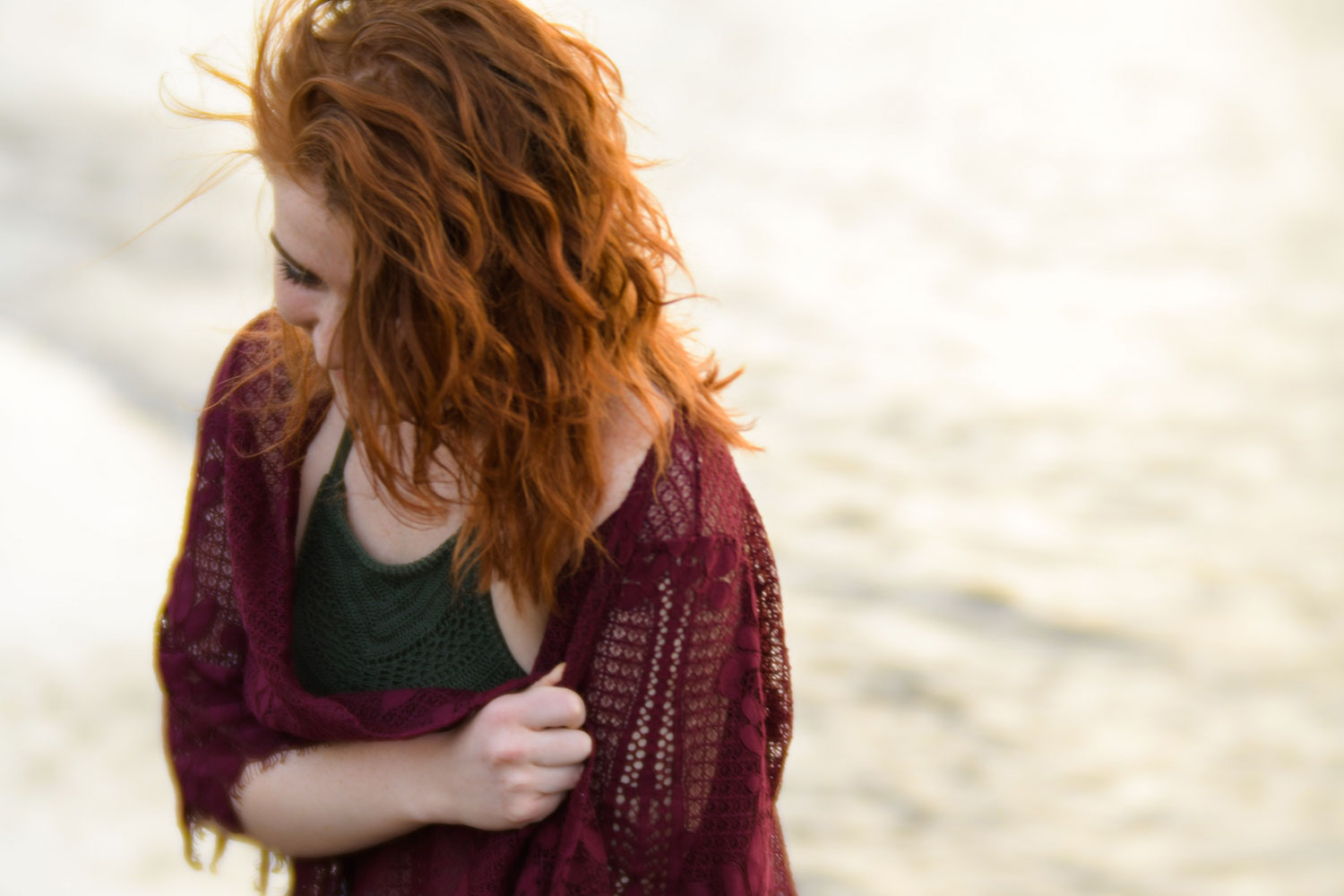“If you’re willing to put in some effort, the Velvet 85 is an excellent creative tool to have in your camera bag.”
- Very well made
- Unique glow at wide apertures
- 2:1 macro mode
- 12-bladed aperture
- Available in many different mounts
- Photos are too soft at f/1.8
- No autofocus, autoexposure
- No EXIF metadata
In an era when lens manufacturers are continually one-upping each other on sharpness, autofocus speed, and image stabilization, Lensbaby stands apart. The small company, based in Portland, Oregon, has been producing a variety of manual focus, manual exposure creative effects lenses since 2004. Where other manufacturers tout numbers on an MTF chart (used to judge resolution), Lensbaby encourages photographers to “embrace the blur.” Its newest optic, the Velvet 85, is an 85mm f/1.8 that’s built with portraits in mind. But does it have what it takes to stand out in crowded field of 85mm lenses? As you will find out in our Lensbaby Velvet 85 review, we sure think so.
Remember the glow
The Velvet 85 is the second entry in Lensbaby’s Velvet series, following the Velvet 56 announced in 2015. Both cost $500 and share many similarities, including an all-metal design with manual-only focus and manual-only aperture control. Both are compatible with full-frame cameras, although we tested the Velvet 85 on a crop-frame Nikon D7500. The extra focal length of the 85 makes it particularly well suited for portraits on full-frame cameras, but the field of view was perhaps a bit tight on our APS-C (DX format) Nikon.
The lens also gets a new 12-blade aperture diaphragm, up from nine in the Velvet 56, which creates circular defocus blur at any f-stop. It renders subjects with the same characteristic “glow” that we are familiar with from the Velvet 56, but with the flattering compression effect that 85mm lenses are known for. Lensbaby says the soft-focus look is reminiscent to film-era lenses, which were often quite soft when shot at wide apertures (although, perhaps not as soft as the Velvet 85’s).
At f/1.8, the Velvet 85 does indeed glow, but it’s likely too soft for most applications (Sigma 135mm F1.8 Art, it is not). It produces a very watercolor-like look, and while Lensbaby states it maintains detail that is merely surrounded by glow, we have a hard time actually finding any detail, in the traditional sense, in photos shot wide-open. The effect can work on the right subjects, but it can also make it look like a photo was simply shot out of focus. Therefore, buyers shouldn’t look at that fast maximum aperture rating as a sign of good low-light performance, unless you’re fine with all of your low-light photography being very soft.
In terms of features, the Lensbaby Velvet 85 stands alone.
Stop down to f/2.8 and things sharpen up enough for you to clearly tell where the focus is, but highlights and edges still glow. This is really where the lens starts to become useful, in our opinion. It also handles backlit scenes very well, as the light wrapping around the subject helps create the glow effect. It’s a nice look that lends images a dreamlike element of fantasy, with just enough detail to keep the subject well defined.
At smaller apertures (larger f-stops), the lens begins to behave more like a standard 85mm, albeit without the niceties of autofocus or autoexposure. Details are sharp, but backgrounds are still rendered pleasingly thanks to the 12-bladed aperture. In our practice, we think sticking between f/2.8 and f/4 is the sweet spot for portraiture with this lens. At f/4, the depth of field is still shallow, but you’ll be able to get things like eyes in sharp focus. You get more of the glow effect at f/2.8, but it can be difficult to nail the focus when handholding.
Beyond portraiture, the Velvet 85 also has a 2:1 macro mode that you can access by rotating the focus ring as far as it will go. It’s a good idea to bust out the trusty tripod for any macro work with this lens, as handholding and manually focusing at close-focus distances is rather difficult. You can achieve some really abstract looks by keeping the aperture open, but as with any macro lens, you’ll need to stop down past f/8 or so to get a sufficient depth of field to keep your subject in clear focus if you want to shoot at the 2:1 magnification distance.
Flying without instruments
For those unfamiliar with Lensbaby lenses, they contain zero electronics. The mount on the Velvet 85 lacks the typical CPU contacts found on other modern lenses. This doesn’t just mean there’s no autofocus, but there is no communication between the lens and the camera at all. The camera doesn’t know what aperture the lens is set to, so you’re limited to manual exposure mode. Furthermore, your image files won’t contain any lens metadata — if you want to know what aperture you were using for a particular image, you better dig out your old exposure logbook. This might not matter to everyone, but if, say, you’re writing a lens review and want to be able tell your readers what aperture a particular image was shot at, it’s probably something you should think of ahead of time. D’oh!
As with the Velvet 56, the aperture is controlled by an old-school ring on the lens. It stops down immediately as you rotate it, meaning you see the effect of a decreased aperture through the viewfinder without needing to press the depth of field preview button. This also reduces the amount of light making it to your eye. A mirrorless camera with an electronic viewfinder will compensate for this, but on a DSLR your window to the world can get quite dark at smaller apertures, depending on the lighting. You can, of course, open the aperture to frame and focus your shot, then stop it down before you press the shutter button.
On the other hand, not having any electronics makes it relatively easy to manufacturer the lens for different camera systems. The Velvet 85 is available in (are you ready for this?) Canon EF, Nikon F, Sony E, Sony A, Pentax K, Micro Four Thirds, and even Samsung NX mounts.
As for focusing, the focus ring is very smooth and has a long throw, so it’s not the fastest lens in the world to work with, but it can be very precise. Or at least, sometimes it can. Wide open, it is difficult to dial in critical focus as the image is just too soft. Stopped down, the depth of field increases, causing things to look in focus in the viewfinder even when you might be off by a small margin. We adjusted to it somewhat after some practice, but the real remedy to this would be to work in live view, where you can punch in on the image to check focus before shooting. Working from a tripod would also make things easier.
The value of Velvet
At $500, the Velvet 85 is priced in line with other 85mm f/1.8 lenses, but it’s a complement, rather than a replacement, to such a lens. The 85mm is a standard workhorse lens for any portrait photographer, but the Velvet 85 will see more specialized use. It is an effects lens first, and while it’s not meant to compete directly with a standard 85mm, many photographers will likely see it as still competing for their money. Can you afford to have two 85mm lenses? If you can only afford one, do you go with the one you can use every day, or the one you’ll pull out once in a while to grab that special shot?
The 12 aperture blades and macro capability are unique among 85mm lenses.
While the answers might seem obvious for the majority of budget-conscious photographers, it’s important to point out that the Velvet 85 is more than just an 85mm lens. Beyond the glow effect, there are two other big features that help it stand out: The 12-blade aperture and the 2:1 macro ability. These aren’t things found on most other 85mm lenses, nor any lens in the $500 price range, for that matter. Stop the lens down beyond f/4, and you can get the standard 85mm look but with the benefit of 12 aperture blades. Then move in close and grab a detail shot without having to change lenses.
The Velvet 85 may not appeal to everyone, but certain photographers will definitely find a use for it. Fashion bloggers, in particular, can take advantage of the glow effect and macro capabilities. Filmmakers, who often resort to manual focus anyway, will also love it for the variety of shots it can facilitate. (Aside: High-end cinema lenses also often feature 12-bladed apertures).
Warranty
Lensbaby products carry a one-year limited warranty.
Our Take
We like the Velvet 85. Like any Lensbaby product, it may be of limited appeal, but it expands on a classic portrait focal length with both a new look and new features. We don’t imagine too many people will shoot it at f/1.8 — it’s just so soft — but we really like what it can do at other f-stops. The lack of autofocus and autoexposure support may turn off some potential buyers, but this lens just wouldn’t be the same with those features (nor would it be as inexpensive). The process of focusing and setting your exposure by hand (and manually noting your f-stop, if you go that far) recalls a slower paced time in photography, and we think this adds to, rather than detracts from, the photographic experience.
Is there a better alternative?
The Velvet 85 is wonderfully distinct, and for that reason there are no direct alternatives. There certainly are other 85mm lenses, but again, the Lensbaby is a complement, not a replacement, to them. Some people will undoubtedly still debate between the two, or may have to decide if owning a second 85mm is rational, but in terms of features, the Velvet 85 stands alone.
Within Lensbaby’s own catalog, the Velvet 56 could be considered an alternative. Both lenses offer many similarities, and the shorter 56mm focal length might make for more comfortable working distance on APS-C cameras. Lensbaby has outlined the differences on its blog, which is worth a read for anyone deciding between the two.
How long will it last?
This lens is built very well, and seeing as it doesn’t have autofocus, image stabilization, or any electronics at all, there is very little to break. We see no reason it shouldn’t last for many years to come.
Should you buy it?
Yes, especially if you are a portrait photographer and want to add a new look to your repertoire. (If you’re just in the market for any old 85mm, then we might recommend picking up a first-party autofocus model first.) It is basically three lenses in one (effect, standard 85mm, and macro), and if you can work around the lack of autofocus, autoexposure, and metadata, then you should definitely consider making room in your camera bag for the Velvet 85.















